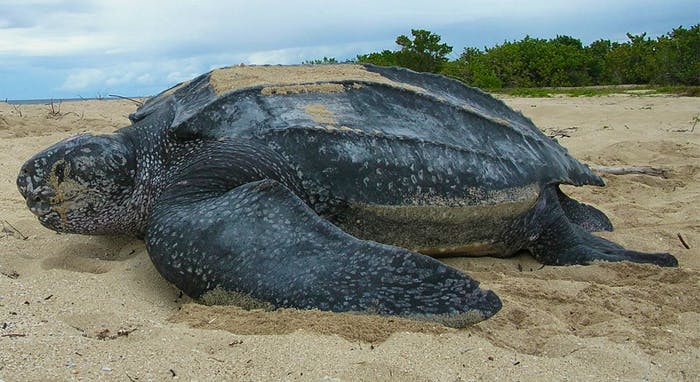Reducing consumer demand may be the most effective way to stop wildlife trafficking
It’s hard to overstate just how enormous a problem wildlife trafficking is.
Along with drug, arms, and human trafficking, it is among the largest illegal trades in the world, estimated at up to $20 billion a year. Its impact reaches every corner of the earth, taking elephants from the plains of Africa and lizards from the cloud forests of Central America, pulling rare frogs from their leafy hideouts and sharks from oceans around the globe. Each year, millions of wild animals are brought into captivity as pets, sacrificed for style, killed for food or supposed medicinal purposes, and much more.
It would be easy to lay blame on a select few: The poachers who take these animals from the wild, the smugglers who sneak their products into other countries, or even the restaurants, pet stores, boutiques and other shops that sell the final product. But taking down one poacher, smuggler, or seller won’t put an end to this devastating trade. The biggest threat…is the rest of us.
It’s the everyday consumer. The people who buy that lovely tortoiseshell decoration for their home without realizing it was once the actual shell of a critically endangered sea turtle. Or that fish oil supplement that actually has ingredients from endangered hammerhead sharks. Or that pet bird “raised in captivity” that was actually taken from its nest as a chick and smuggled across the border. The best way to end overexploitation of wildlife for trade is by stopping the demand. If we all stop buying, they will stop selling.
That’s a great thought overall, but just saying that won’t get us there. Now, the United States is presenting a draft resolution at the upcoming CITES meeting to actually doing something about it.
This draft resolution takes aim at reducing the demand for wildlife trafficking wherever there is a market for it in any of the 183 nations that have signed on to CITES. Here’s some of what it would require the governments of those countries to do:
Be proactive. Develop strategies to reduce the demand for illegally traded wildlife goods within their borders.
Make new rules, and give them teeth. Enact new policies, legislation, and law enforcement initiatives to support this effort.
Find out what’s driving the demand on your home soil. Conduct in-depth and regular research on the demand for illegally traded species so that the agencies involved can attack the problem at the root.
Be specific enough to be effective. Instead of only raising general awareness of the issue, create species-specific campaigns that address the demand for and impact of the trade. Give consumers an idea of exactly what goes into not just some kind of product, but a specific product they use, and how it impacts a specific species.
If this draft resolution is adopted – and our team has been working hard to gather support for it, and will continue to do so at the CITES meeting – then every nation that is a party to the CITES treaty will have to follow it.
Wildlife trafficking is a global crime, but the U.S. is certainly one of its most major players. We are one of the top consumers of several types of wildlife products, and a key hub for wildlife products destined for markets all over the world. In fact, illegal wildlife products come into the U.S. from 214 different countries and territories. That means that if we can address the problem here, it could benefit wildlife everywhere.
So wish us luck in supporting this important draft resolution at CITES! Hopefully with this effort, we can get more countries cracking down on the demand for illegal wildlife products within their borders, including our own. In the meantime, there are also steps you can take at home to make a big difference for wildlife:
Raise Awareness: Spread the word about the role the U.S. plays in wildlife trafficking to your family, friends and community.
Ask Questions: Always ask where a product is coming from. Anything from seafood, to pets, to clothing products can be part of how wildlife is exploited. The more questions we ask as consumers, the more accountable producers and sellers will need to be.
Stay Informed: Learn more about how the U.S. Fish and Wildlife Service works against illegal trade, and what our team at Defenders is doing to fight wildlife trafficking. We’ll keep you updated when opportunities come up to get involved.
Together, we can make a real difference for the sharks, frogs, parrots, sea turtles and other wildlife that are exploited for this illegal and devastating trade.






Follow Defenders of Wildlife
facebook twitter instagram youtube tiktok threads